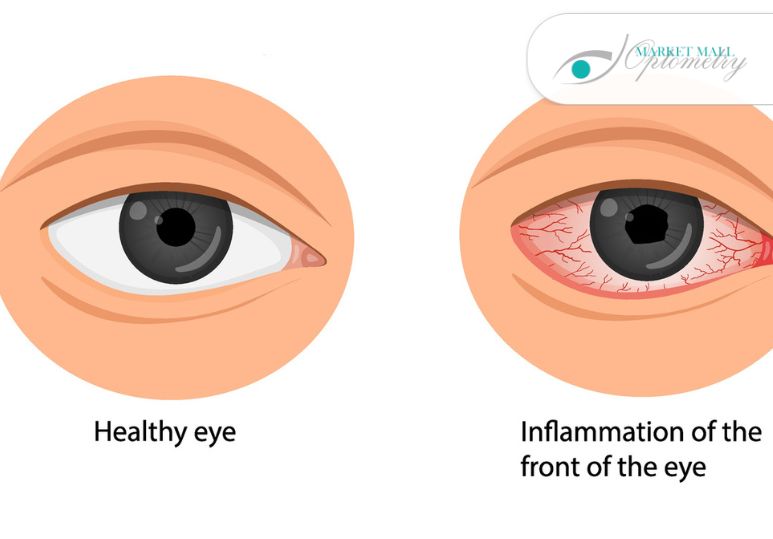At Market Mall Optometry, we understand that being diagnosed with uveitis can bring about a multitude of questions and concerns. Uveitis, an inflammation of the uvea or the middle layer of the eye, is not just a single condition but encompasses a range of disorders that can affect one or both eyes. Our goal is to provide a foundational understanding of the types, causes, and symptoms of uveitis, offering clarity and guidance for those newly diagnosed or seeking more information.
Navigating the complexities of uveitis requires a comprehensive approach. At Market Mall Optometry, we are committed to delivering in-depth care and information to help our patients understand their condition. By exploring the various aspects of uveitis together, we aim to empower individuals with the knowledge necessary to manage their eye health effectively.
Types of Uveitis
Uveitis is categorized based on the part of the uvea it affects:
- Anterior Uveitis: The most common form, affecting the front part of the uvea. Symptoms can appear suddenly and may last for several weeks.
- Intermediate Uveitis: Involves the ciliary body and vitreous. Symptoms might be more persistent.
- Posterior Uveitis: Affects the back part of the uvea and can lead to more severe vision problems.
- Panuveitis: When inflammation affects all areas of the uvea, leading to widespread eye issues.
Each type presents unique challenges and requires specific management strategies to ensure the best outcomes for eye health.
Common Causes of Uveitis
The exact cause of uveitis often remains unidentified, but several factors are known to trigger the condition:
- Autoimmune Disorders: Conditions like rheumatoid arthritis or lupus can lead to uveitis.
- Infections: Bacterial, viral, fungal, or parasitic infections may trigger inflammation.
- Injury: Trauma to the eye can precipitate uveitis.
- Cancer: In rare cases, eye cancer can manifest as uveitis.
Understanding the underlying cause is crucial for tailored treatment and management of the condition.
Symptoms Patients May Experience
Uveitis symptoms can vary but often include:
- Eye Redness and Pain: The most common indicators of uveitis.
- Blurred Vision: Inflammation can impair the clarity of sight.
- Light Sensitivity: Patients may find it uncomfortable to be in well-lit environments.
- Floaters: Small spots or streaks moving across the field of vision.
Recognizing these symptoms early and seeking prompt treatment can help prevent complications and preserve vision.
Uveitis is a complex condition that demands a nuanced understanding of its types, causes, and symptoms. At Market Mall Optometry, we are dedicated to providing our patients with comprehensive care and the latest information on uveitis. If you're experiencing any symptoms or have concerns about your eye health, we encourage you to reach out. Early diagnosis and intervention are key to managing uveitis effectively and maintaining your vision and quality of life.
Living with uveitis can be challenging, but with the right support and management strategies, many individuals continue to lead full and active lives. Remember, you are not alone in this journey. The team at Market Mall Optometry is here to support you every step of the way, ensuring you have access to the care and information you need to navigate your condition successfully.
Written on behalf of Market Mall Optometry.
FAQs
Q. What is Uveitis?
A. Uveitis is inflammation of the uvea, the middle layer of the eye, which includes the iris, ciliary body, and choroid. It can cause redness, pain, light sensitivity, and blurred vision.
Q. What Causes Uveitis?
A. Uveitis can be caused by autoimmune disorders, infections, injury to the eye, or be idiopathic, meaning the cause is unknown. Some systemic diseases like sarcoidosis, rheumatoid arthritis, and infections like herpes can also lead to uveitis.
Q. What are the Symptoms of Uveitis?
A. Symptoms can include eye redness, pain, blurred vision, light sensitivity, and floating spots in the vision. The symptoms can develop rapidly and require prompt medical attention.





